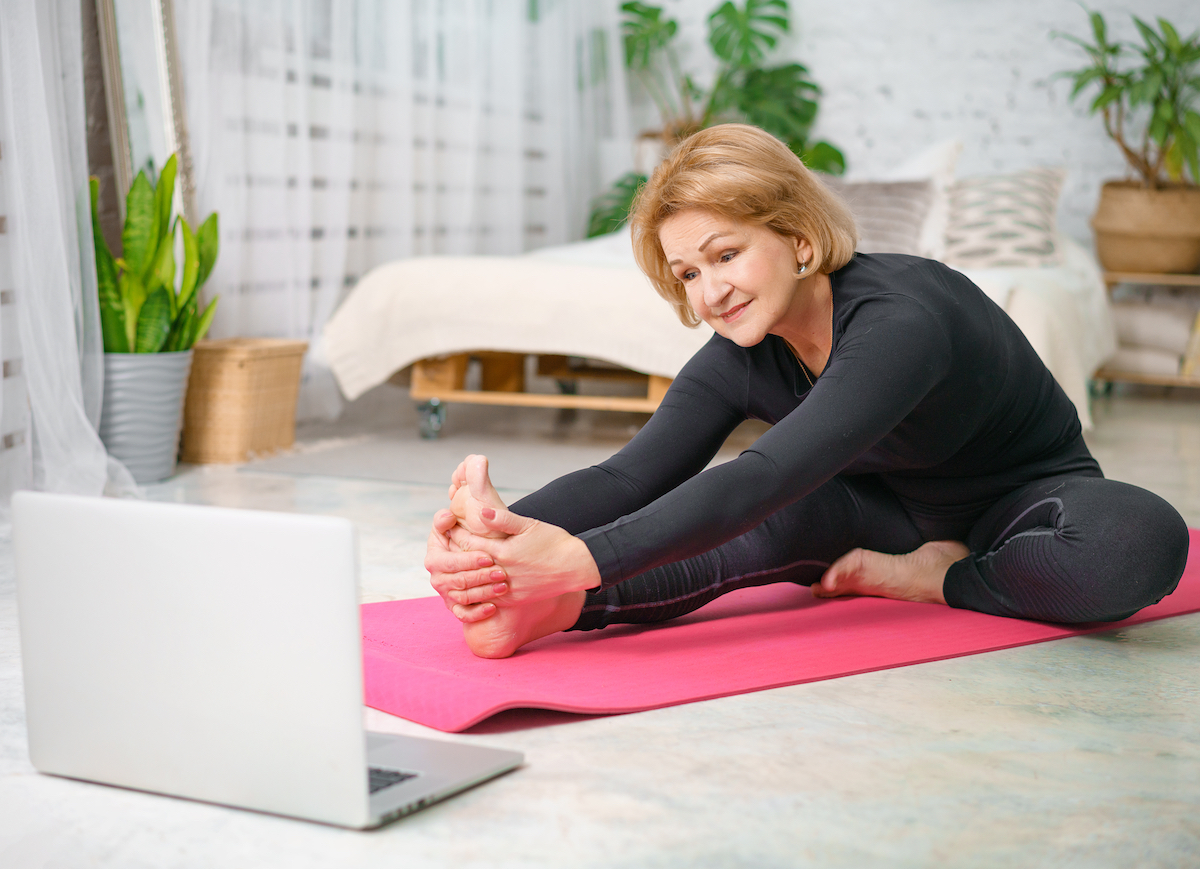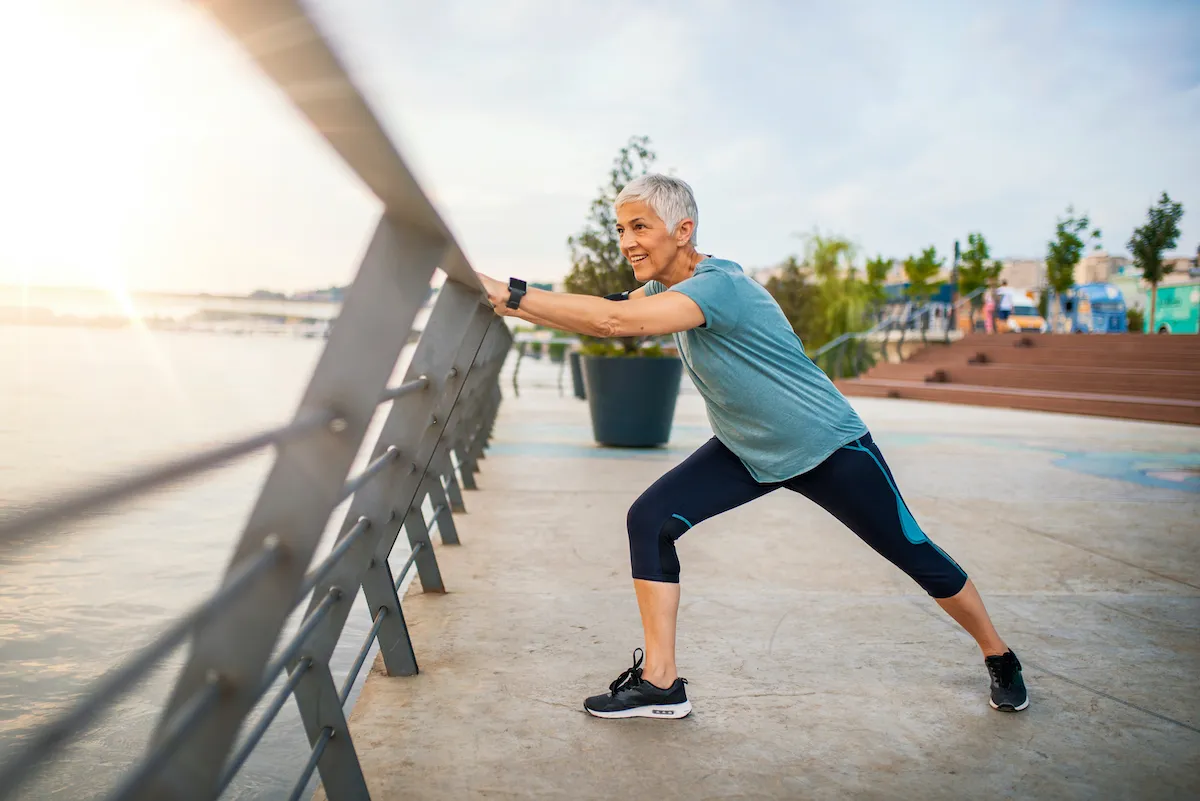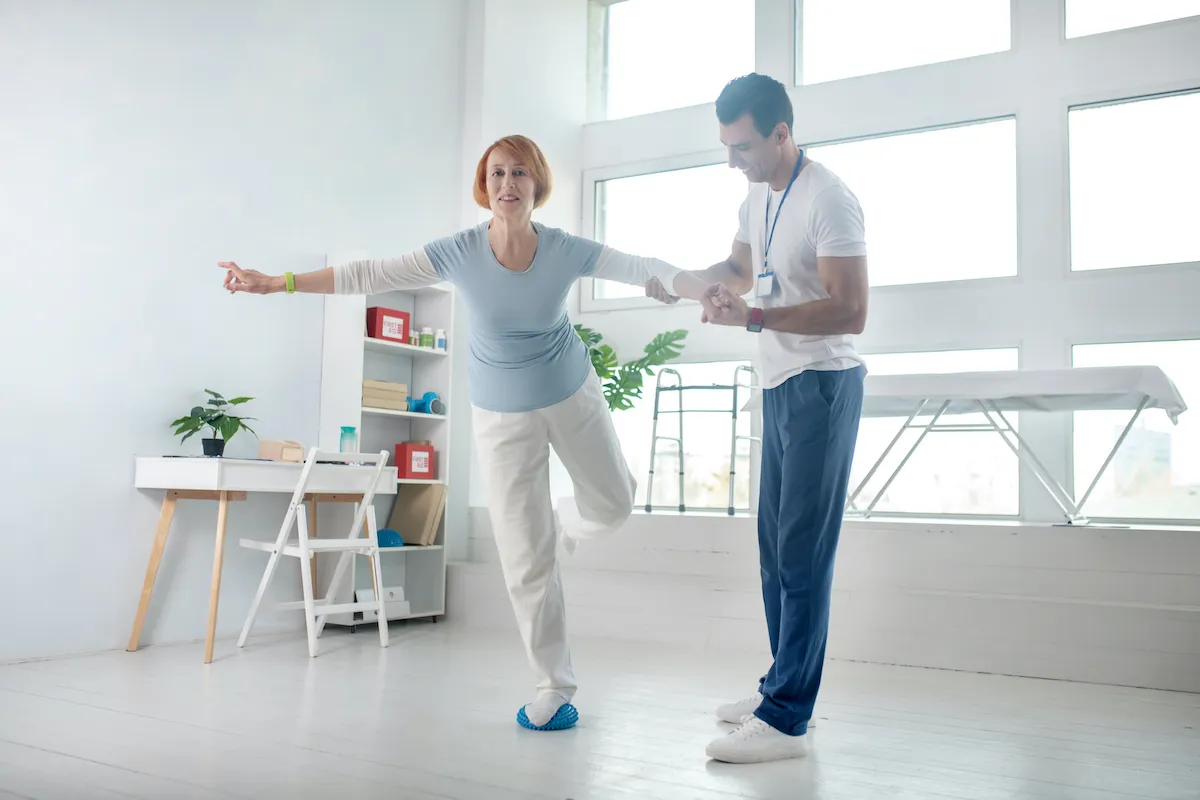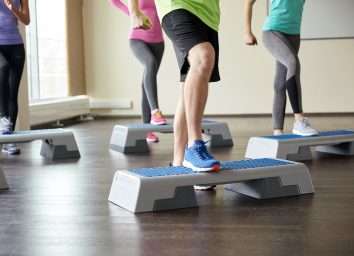What a Daily Stretching Habit Does to Your Body After 60, Say Experts

Butterfly stretches and calf raises have long been staples of elementary school P.E. classes and after-school soccer practices. But any trainer will tell you that stretching isn't child's play—it's an important part of fitness for all ages.
Stretching on the reg is crucial for a wide variety of reasons, says Caitlin Ghosio, a NASM-certified personal trainer and Pilates instructor. "It's reducing the risk of injury, first and foremost, because the tighter you are the more likely you are to get injured," she says. Stretching also improves your range of motion and thus your workout efficiency, she says—because the more your muscles can move, the better they can work out.
Stretching continues to be important in your 60s and beyond, because it helps counteract some of the natural physical decline that happens with aging. (More on those specifics later.) But stretching can only take you so far on its own. "Without strength, stretching is only half as productive as it could be," Ghosio says. If you're not doing other physical exercises that build up your muscle strength "and support whatever you stretch," she says you may not see lasting benefits. (Looking for specific pointers there? Check out: Over 60? Do These Exercises to Build Stronger Muscles, Say Experts.)
That said, stretching every day can offer some major benefits to people who are 60 and up. Curious? Here's why you should get out that foam roller and get stretchy. And don't miss: Over 60? This 5-Minute Bodyweight Workout Can Change Your Life.
Stretching supports your mobility

"As [you] age, your body is naturally going to decrease in range of motion," says Ghosio. You naturally lose muscle mass, and both muscles and joints can get stiffer with time, making it harder to get around.
Thankfully, stretching—along with exercise—can support and improve mobility, Ghosio says. Why? Per Harvard Health, stretching muscles helps lengthen them, making them more flexible and better able to contract. This helps support easier movement. "Stretching and getting your body to move in a way that it might not necessarily want to as much anymore is going to make your day-to-day life easier," she adds. Read more: The Surprising Exercise You Stop Doing After 60, Say Experts.
It can improve balance

A person's balance is widely considered to be a marker of longevity. Balance issues can lead to falls—which injure millions of U.S. seniors every year—and are also a potential sign of cognitive health. But Ghosio says stretching regularly can help with balance training. "Anything you can work on changing your position, challenging your gravity, challenging your stability against gravity is going to help with functioning better," she says. Read more: Over 60? Here's What Lifting Weights Twice Per Week Does to Your Body.
Stretching can improve circulation

Ghosio says that stretching can help improve circulation, which is key for older people who may be more sedentary. Indeed, a small 2020 study in The Journal of Physiology found that people who did leg stretches five times a week for 12 weeks had better blood flow and less stiffness than people who did not stretch. They also had lower blood pressure than they did at the start of the study. Per Harvard Health, researchers believe that lower-body stretching may press on the arteries in the legs, which compels them to expand to allow for increased blood flow. Read more: This One Walking Exercise Can Predict Your Death Risk, Says Study.
Stretching pointers for beginners

The American College of Sports Medicine (ACSM) says that people should stretch at least two to three times a week, but daily stretching is "most effective." And you should absolutely be stretching whenever you workout.
Ghosio adds that you shouldn't stretch "cold," meaning without some kind of movement beforehand. "When your body is cold, it's just going to pull on whatever has the most flexibility, and unless your muscles are warmed up, the thing that has more flexibility is actually the tendon that connects your muscle to your bone," she says. When you're pulling on a cold muscle, you're actually just stretching out the tendon, which can lead to pain or injury. This doesn't mean you have to do a full workout before you stretch, she says. But if you're feeling shoulder pain and want to stretch it out, for example, she suggests doing some arm swings or other movement for a few minutes first before you start actually stretching.
She also says you should listen to your body and stop holding a stretch if you feel pain. "If something doesn't feel right, don't force it," she says. Try a modification or a different move that works those muscle groups without the pain instead. Looking for specific stretches to try? Don't miss: 5 Yoga Stretches Everyone Over 40 Should Do, Says Doctor.








